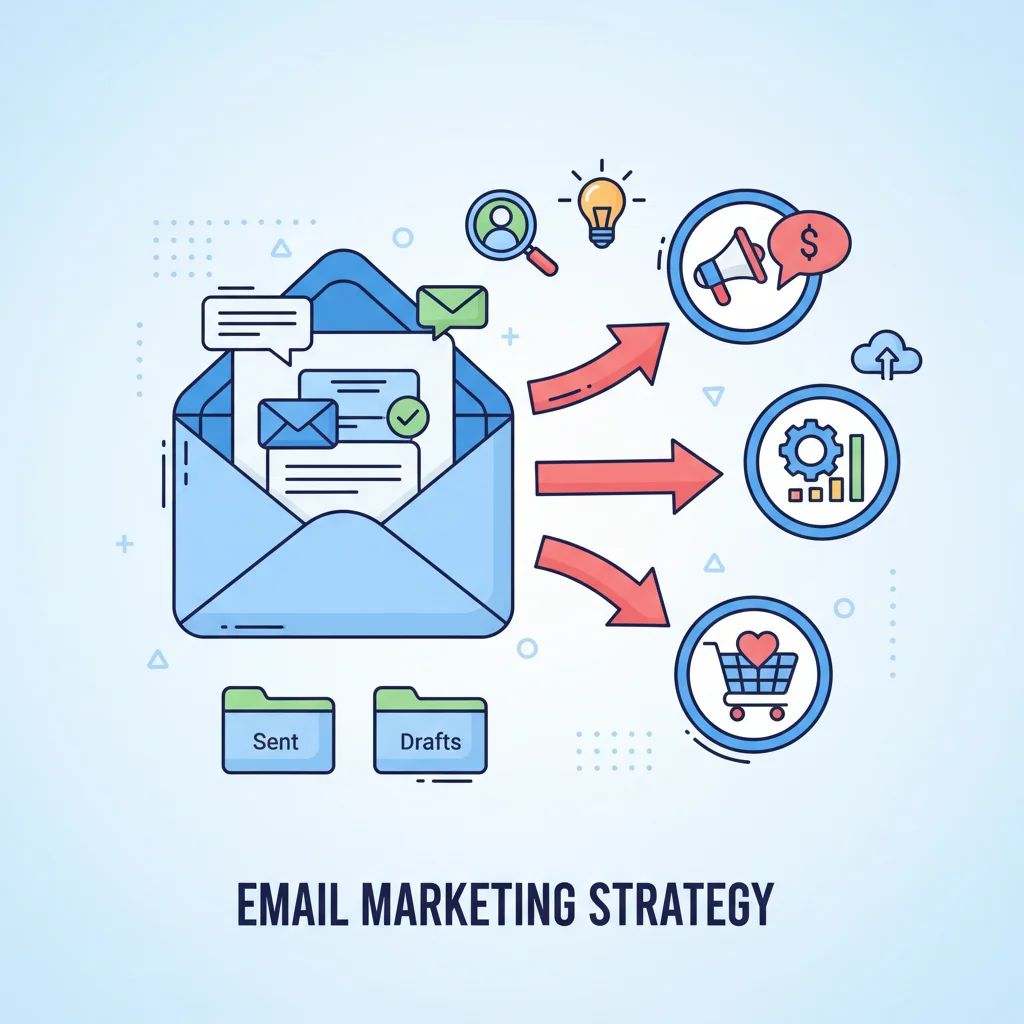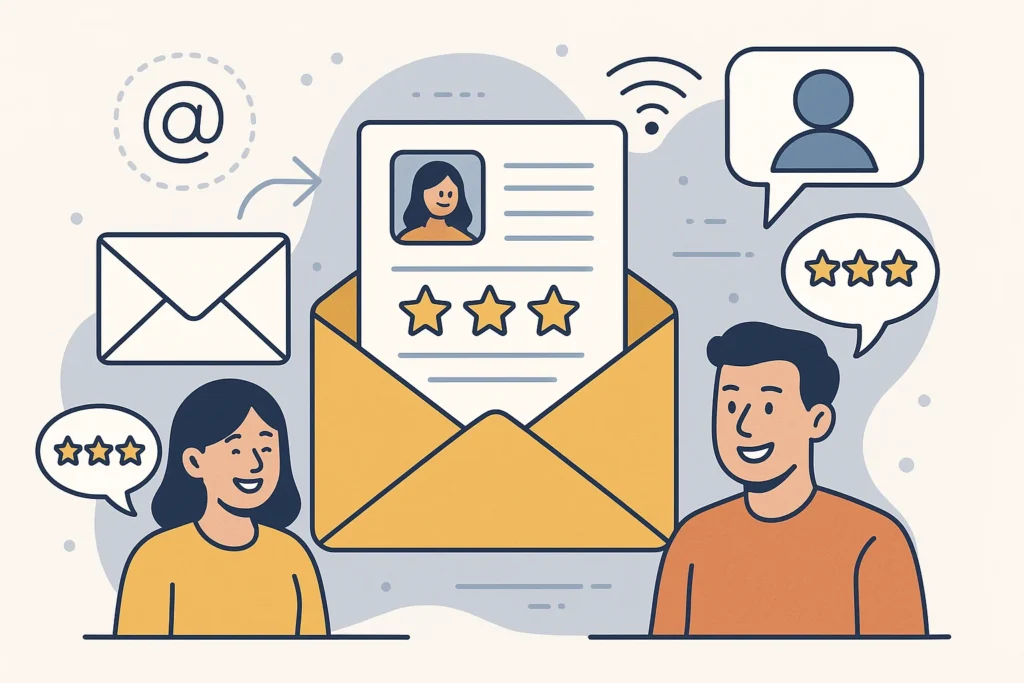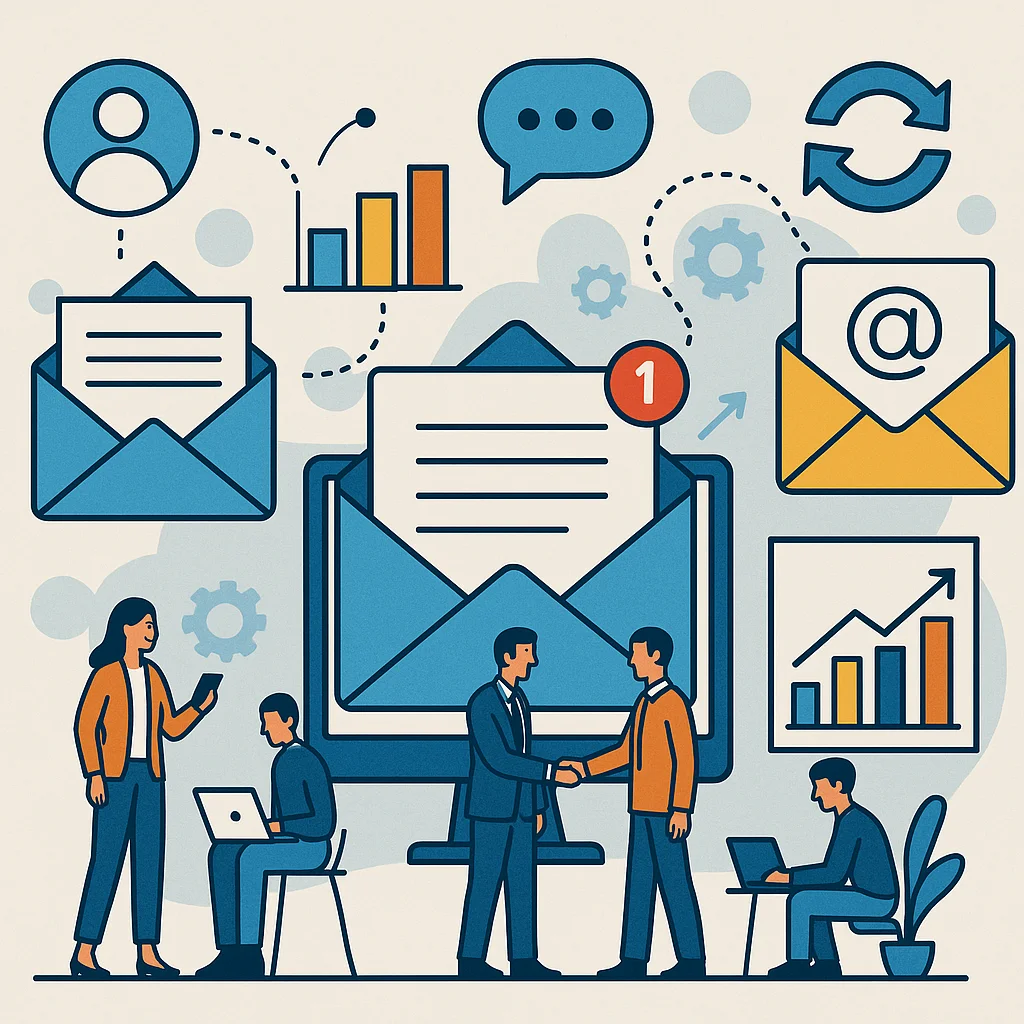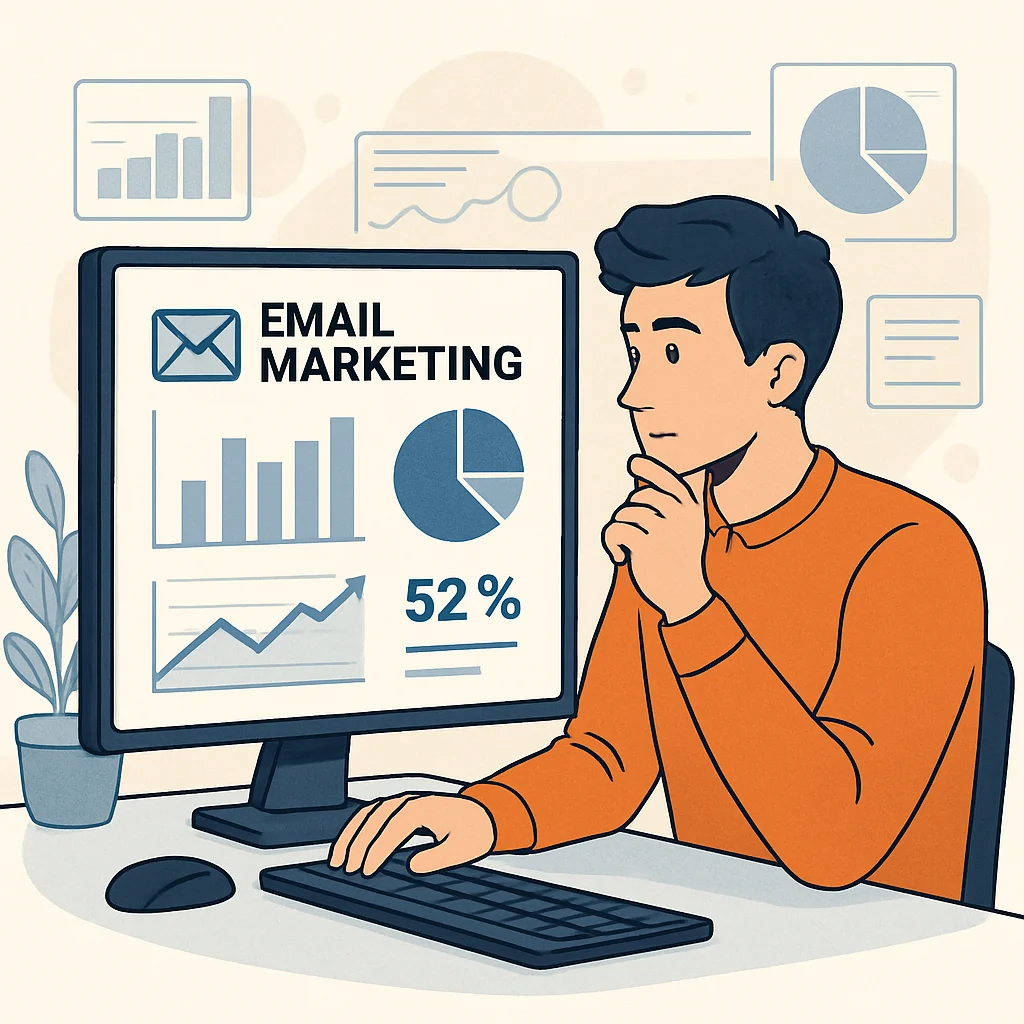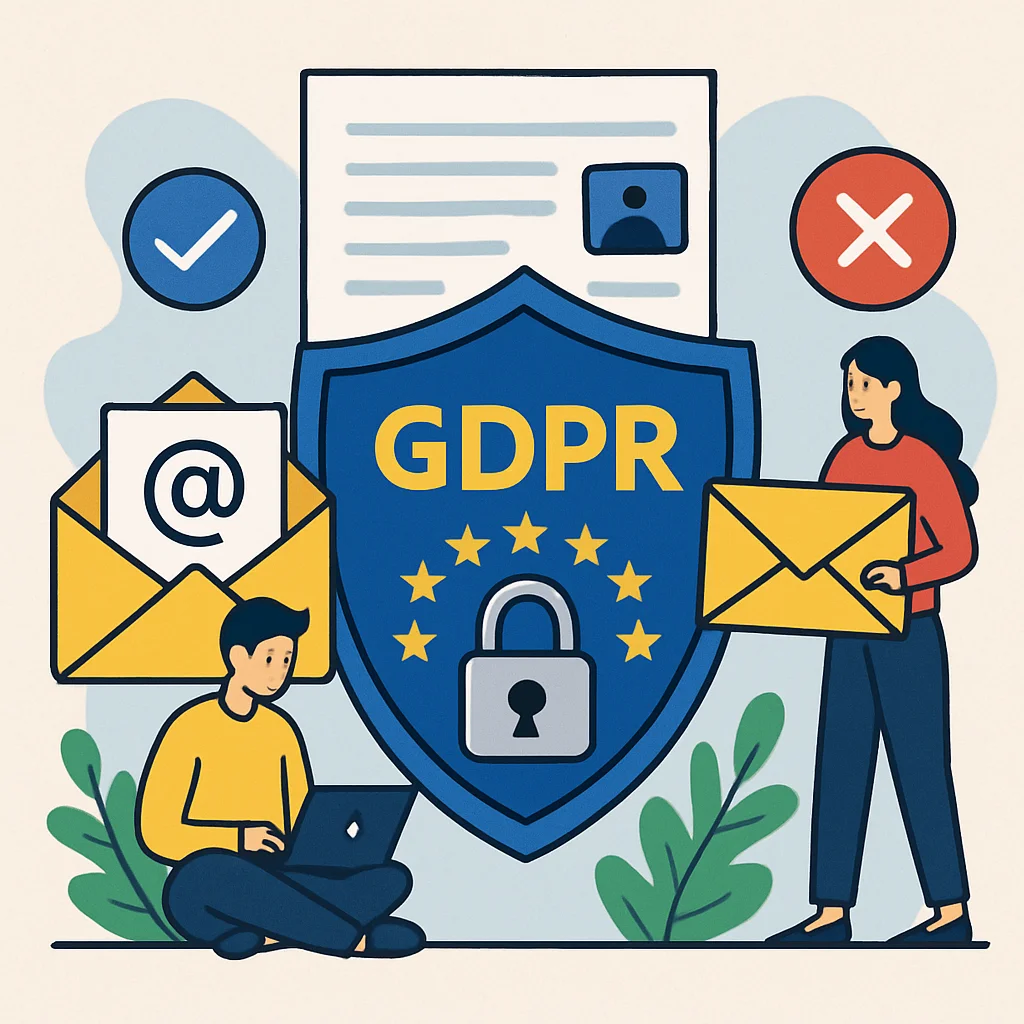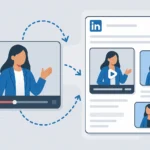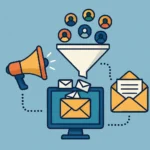Now Reading: 7 Effective Welcome Email Series Creation Strategies for Higher Conversions
-
01
7 Effective Welcome Email Series Creation Strategies for Higher Conversions
7 Effective Welcome Email Series Creation Strategies for Higher Conversions
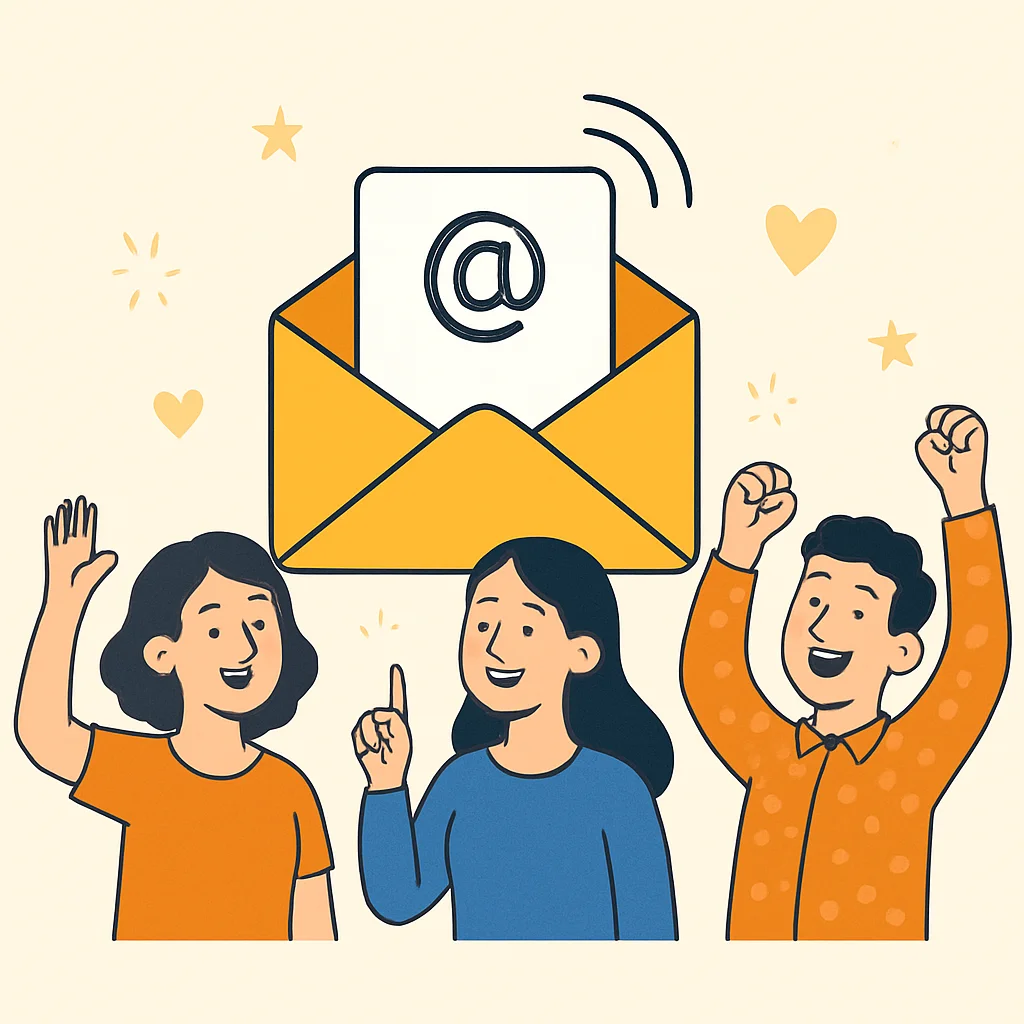
I still remember the sinking feeling when I realized my welcome emails were being ignored. Hours spent crafting messages that disappeared into the void of crowded inboxes. Sound familiar? Effective welcome email series creation isn’t just nice to have-it’s essential for turning those hard-won subscribers into actual customers. The good news? I’ve cracked the code, and I’m about to share everything I know.
Key Takeaways
- A successful welcome email series typically includes 3-5 emails sent over 1-2 weeks
- Your first email should deliver immediate value and set expectations
- Personalization increases engagement-use subscriber data and segmentation
- Each email needs one clear call-to-action to guide subscribers
- Welcome series should tell your brand story gradually, not all at once
- Test timing, subject lines, and content to optimize performance
What Makes A Welcome Email Series So Important
Let’s be real-first impressions matter. A lot. When someone hands over their email address, they’re basically saying “I’m interested, tell me more.” And what do most businesses do? Send a boring “thanks for subscribing” message and then disappear for weeks.
Big mistake. HUGE.
Your welcome email series is your digital handshake. It’s your chance to make new subscribers feel like they’ve made the smartest decision ever by joining your list.
The stats back this up too:
- Welcome emails have an average open rate of 50-60% (waaaaay higher than regular campaigns)
- They generate 320% more revenue per email than other promotional emails
- 74% of subscribers expect to receive a welcome email immediately after subscribing
I’ve seen welcome emails that are so good, they make you want to high-five your screen. And I’ve seen ones so bad they make you hunt for the unsubscribe button faster than you can say “spam.”
The difference? Effective welcome email series creation that focuses on the subscriber, not just the brand.
Planning Your Welcome Email Series Structure
Before you write a single word, you need a game plan. Effective welcome email series creation starts with structure.
Determining the Ideal Number of Emails
How many emails should your welcome sequence include? I usually recommend 3-5 emails for most businesses. Here’s why:
- Too few (just 1-2): You barely scratch the surface of building a relationship
- Too many (7+): You risk annoying your new subscribers before they get to know you
That said, the “right” number depends on your business complexity and sales cycle. A simple product might need just 3 emails, while a complex service might justify 5-7.
Optimal Timing Between Emails
Timing is everything in relationships-including the one with your subscribers. Here’s a timing framework that works well:
- Email #1: Immediately after signup (like, within minutes)
- Email #2: 1-2 days later
- Email #3: 3-4 days after signup
- Email #4: 5-7 days after signup
- Email #5: 7-10 days after signup
This spacing gives subscribers time to digest each message without forgetting who you are. But don’t be rigid-test different timing with your audience.
Mapping Goals for Each Email
Every email in your series needs a job. Here’s how I typically map them:
- Welcome & Deliver Promise: Thank them, deliver what you promised, set expectations
- Education & Value: Provide useful content related to their interests
- Brand Story & Differentiation: Share what makes you unique
- Social Proof: Show testimonials and success stories
- Soft Conversion: Invite them to take the next step (trial, purchase, etc.)
Without clear goals, your emails will ramble and subscribers will tune out. Each email should move them one step closer to becoming a customer.
Useful Articles:
Crafting Your First Welcome Email
Your first welcome email is the MVP of your series. It gets the highest open rates and sets the tone for everything that follows.
Subject Line Best Practices
The battle for attention starts in the inbox. Your subject line needs to:
- Be clear, not clever: “Welcome to [Brand] – Your [Download/Gift] Inside” works better than vague teases
- Create urgency: “Your welcome gift expires in 24 hours”
- Keep it short: 6-10 words perform best
- Use personalization: Including the subscriber’s name can boost open rates by 26%
Some of my best-performing welcome email subject lines:
- “Welcome aboard, [Name]! Here’s your [promised item]”
- “It’s official – you’re in! Here’s what’s next”
- “Thanks for joining! Your [download/discount] is waiting”
Essential Elements to Include
A great first welcome email includes:
- Warm, genuine thank you (sound like a human, not a robot)
- Clear delivery of whatever you promised (download, discount code, etc.)
- Brief introduction to your brand (keep it short-there’s time for the full story later)
- What to expect (content, frequency)
- One primary call-to-action (don’t overwhelm with options)
- How to get help (contact info, support links)
Design Considerations
Your welcome email design should be:
- Mobile-friendly (over 60% of emails are opened on mobile devices)
- On-brand but clean (not the time for cluttered design)
- Light on images (they can trigger spam filters and slow loading)
- Scannable (use headers, bullet points, and white space)
I always recommend including your logo and using consistent brand colors, but keeping the overall design simpler than your regular newsletters.
Building the Rest of Your Welcome Sequence
Once you’ve nailed your first email, it’s time to build out the rest of your series. Each email should feel connected but serve a different purpose.
Email #2: Delivering Value
Your second email should arrive 1-2 days after the first and focus on providing immediate value. This is where you prove subscribing was worth it.
What works well here:
- Educational content related to their interests
- Quick wins they can implement immediately
- Unexpected bonuses they weren’t expecting
For example, if you sell fitness products, your second email might include “3 Five-Minute Workouts You Can Do Anywhere” or a surprise discount code.
The key is making subscribers think “Wow, if the free stuff is this good, their paid offerings must be amazing!”
Email #3: Building Connection
By email #3 (usually day 3-4), it’s time to build a deeper connection. This is where your brand story comes in.
Effective elements include:
- Your origin story (why you started the business)
- Your mission and values (what you stand for)
- Behind-the-scenes glimpses (the humans behind the brand)
Keep it authentic and focused on how your story benefits the customer. Nobody cares that you started your business in your garage-unless that story explains why you understand their problems better than competitors.
Email #4: Establishing Credibility
Around day 5-7, focus on building trust through social proof:
- Customer testimonials (specific results work better than generic praise)
- Case studies (brief versions with concrete outcomes)
- Media mentions or awards (external validation)
- User-generated content (shows real people use and love your products)
This email answers the question: “Why should I trust you?”
Email #5: Converting Subscribers
Your final welcome email (day 7-10) should guide subscribers toward the next step in your relationship:
- Clear, compelling offer (possibly with a welcome discount)
- Recap of value provided (remind them what they’ve already received)
- Strong but non-pushy call-to-action (make it easy to say yes)
- Guarantee or risk reversal (remove barriers to conversion)
The tone should be helpful, not desperate. You’re inviting them to continue the journey, not begging for a sale.
Personalization Strategies That Work
Generic welcome emails are so 2010. Today’s subscribers expect personalization.
Using Signup Data Effectively
The information collected during signup is gold for personalization:
- Name: Use it in subject lines and greetings (but don’t overdo it)
- Location: Reference local events or customize timing based on time zones
- Interests: If you asked about preferences, tailor content accordingly
- Source: Reference how they found you (“Since you came from our Facebook page…”)
Even small personalizations make subscribers feel seen and valued.
Behavioral Triggers and Segmentation
As subscribers interact with your welcome emails, use their behavior to personalize subsequent messages:
- Opened but didn’t click? Your next email might need stronger CTAs
- Clicked but didn’t convert? Address potential objections
- Didn’t open? Try a different subject line approach in the next email
Some email platforms let you create dynamic paths based on these behaviors, essentially creating a “choose your own adventure” welcome series.
Creating Conditional Content
Not every subscriber needs identical information. Use conditional content blocks that display different information based on subscriber data:
- New vs. returning customers (different offers or education)
- Different product interests (relevant examples or use cases)
- Various industry segments (tailored language and pain points)
This approach delivers relevant content without creating entirely separate email sequences.
Useful Articles:
Writing Copy That Converts
The words you use make or break your welcome series. Here’s how to write copy that connects and converts:
Finding Your Brand Voice
Your welcome emails should sound like your brand-whether that’s professional, quirky, inspirational, or technical. Whatever voice you choose:
- Be consistent across all emails
- Sound like a human, not a corporation
- Match expectations set by your website and other touchpoints
I find it helpful to create a simple voice guide with do’s and don’ts. For example: “Do use conversational language. Don’t use jargon or buzzwords.”
Creating Compelling CTAs
Every email needs a clear next step. For effective CTAs:
- Use action verbs (“Claim Your Discount” not “Discount Available”)
- Create urgency when appropriate (“Shop the Sale – Ends Tomorrow”)
- Make them stand out visually (buttons perform better than text links)
- Focus on benefits (“Start Saving Time” rather than “Sign Up”)
Limit each email to one primary CTA. Secondary links are fine, but make it obvious which action you most want subscribers to take.
Storytelling Techniques
Stories capture attention in ways that facts and features can’t. Throughout your welcome series:
- Share customer success stories (transformation narratives)
- Use mini-stories to illustrate points (even a one-paragraph anecdote works)
- Create a narrative arc across the entire email series
The best welcome series tells a cohesive story from first email to last, with each message building on the previous one.
Design Elements That Enhance Engagement
Good design supports your message without overwhelming it. Here’s how to get it right:
Mobile Optimization Essentials
With most emails now opened on mobile devices, optimization is non-negotiable:
- Single-column layouts work best on small screens
- Larger font sizes (min 14px for body text, 22px for headlines)
- Touch-friendly buttons (min 44×44 pixels)
- Compressed images for faster loading
Always test your emails on multiple devices before launching your welcome series.
Visual Hierarchy and Readability
Help subscribers quickly grasp your message with:
- Clear headlines and subheadings
- Short paragraphs (2-3 sentences max)
- Bulleted lists for easy scanning
- Strategic bold text for emphasis
- Ample white space to prevent overwhelm
Remember that many subscribers will skim, not read. Make your emails scannable and they’ll get the main points anyway.
Consistent Branding Elements
Your welcome emails should visually connect to your website and other marketing:
- Same logo, colors, and fonts
- Similar photography style
- Consistent tone and messaging
This consistency builds trust and reinforces brand recognition during the critical early relationship phase.
Technical Considerations for Deliverability
Even the most brilliant welcome series fails if it lands in spam folders. Protect your deliverability with these practices:
Ensuring Emails Reach the Inbox
To maximize inbox placement:
- Use a reputable ESP (email service provider)
- Authenticate your emails with SPF, DKIM, and DMARC
- Maintain clean lists (remove hard bounces immediately)
- Warm up new sending domains gradually
- Avoid spam trigger words in subject lines
Deliverability issues can tank your entire email marketing program, so this technical foundation is worth getting right.
Testing Across Devices and Clients
Before launching your welcome series:
- Test on multiple email clients (Gmail, Outlook, Apple Mail, etc.)
- Check rendering on various devices (phones, tablets, desktops)
- Verify that all links work correctly
- Ensure images display properly (with appropriate alt text)
Tools like Litmus or Email on Acid can help with comprehensive testing.
Setting Up Proper Tracking
To measure and improve your welcome series:
- Track open rates for each email in the sequence
- Monitor click rates on specific links
- Measure conversion rates from subscriber to customer
- Analyze unsubscribe points to identify problem areas
These metrics will guide your optimization efforts.
Useful Articles:
Examples of Exceptional Welcome Email Series
Let’s look at some real-world examples that nail effective welcome email series creation:
B2C Example: Clothing Retailer
A successful clothing brand welcome series:
Email 1 (Immediate):
- Welcome message with 15% off first purchase
- Brief brand introduction focusing on sustainable materials
- Clear CTA to “Shop New Arrivals”
Email 2 (Day 2):
- Style guide content showing versatile ways to wear their products
- Customer photos featuring diverse body types
- Subtle reminder about welcome discount
Email 3 (Day 4):
- Brand story focusing on ethical manufacturing
- Behind-the-scenes video from their factory
- Introduction to their loyalty program
Email 4 (Day 7):
- Customer testimonials and reviews
- Size guide and fit information
- CTA to browse bestsellers
Email 5 (Day 10):
- Final discount reminder (expires in 48 hours)
- Summary of brand benefits
- Clear “Shop Now” CTA with urgency
B2B Example: SaaS Company
A B2B software welcome series that converts:
Email 1 (Immediate):
- Access to promised resource (whitepaper, webinar, etc.)
- Brief product introduction
- CTA to schedule a demo
Email 2 (Day 2):
- Case study showing ROI for similar company
- Quick-start guide to implementing one feature
- CTA to watch product walkthrough video
Email 3 (Day 4):
- Introduction to customer success team
- FAQ addressing common implementation concerns
- CTA to join upcoming webinar
Email 4 (Day 7):
- Testimonials from industry leaders
- Integration capabilities with other tools
- CTA to start free trial
Email 5 (Day 10):
- Special onboarding offer (extended trial or implementation support)
- Summary of key differentiators
- Direct CTA to speak with sales rep
Common Welcome Email Mistakes to Avoid
I’ve seen (and made) plenty of welcome email mistakes. Here are the biggies to avoid:
Overwhelming New Subscribers
The fastest way to lose subscribers is bombarding them with too much, too soon:
- Information overload (trying to explain everything at once)
- Too many emails in too short a timeframe
- Multiple competing CTAs in a single email
- Lengthy emails that require excessive scrolling
Remember: your welcome series is the beginning of a relationship, not a data dump.
Being Too Sales-Focused
Yes, your welcome series should drive conversions. But being too pushy backfires:
- Selling before providing value
- Making every email a sales pitch
- Using aggressive, high-pressure tactics
- Focusing on your needs rather than theirs
The best welcome series balances value and promotion-heavily weighted toward value.
Neglecting to Set Expectations
Subscribers hate surprises (the bad kind) about what they’ve signed up for:
- Not clarifying email frequency
- Sending content they didn’t expect
- Suddenly changing email cadence or content type
- Adding them to other lists without permission
Be transparent about what they’ll receive and when-then stick to it.
Optimizing Your Welcome Series Over Time
A welcome series isn’t “set it and forget it.” The best ones evolve based on data:
A/B Testing Strategies
Systematically test elements like:
- Subject lines (length, personalization, question vs. statement)
- Send times (time of day, day of week)
- Email length (short and focused vs. longer with more detail)
- CTA placement (top, middle, bottom)
- Image selection (product-focused vs. lifestyle)
Test one element at a time for clear results, and give each test enough volume to be statistically significant.
Analyzing Performance Metrics
Pay attention to these key metrics:
- Open rates (are subject lines working?)
- Click-through rates (is content compelling?)
- Conversion rates (are emails driving desired actions?)
- Unsubscribe rates (where are you losing people?)
- Revenue per email (ultimate measure of success)
Look for patterns and drop-off points that indicate where improvements are needed.
Iterative Improvement Process
Use a systematic approach to optimization:
- Identify weakest performing email in your sequence
- Hypothesize why it’s underperforming
- Test a specific change based on your hypothesis
- Analyze results and implement winning version
- Move to next weakest performer
This methodical approach leads to continuous improvement rather than random changes.
Effective welcome email series creation isn’t a one-time project-it’s an ongoing process of refinement. By starting with a solid foundation, delivering genuine value, and optimizing based on subscriber behavior, you’ll turn more new subscribers into loyal customers. The effort you put into crafting these crucial first impressions will pay dividends throughout your customer relationships. So go ahead-welcome those subscribers like they’re the VIPs they truly are!


